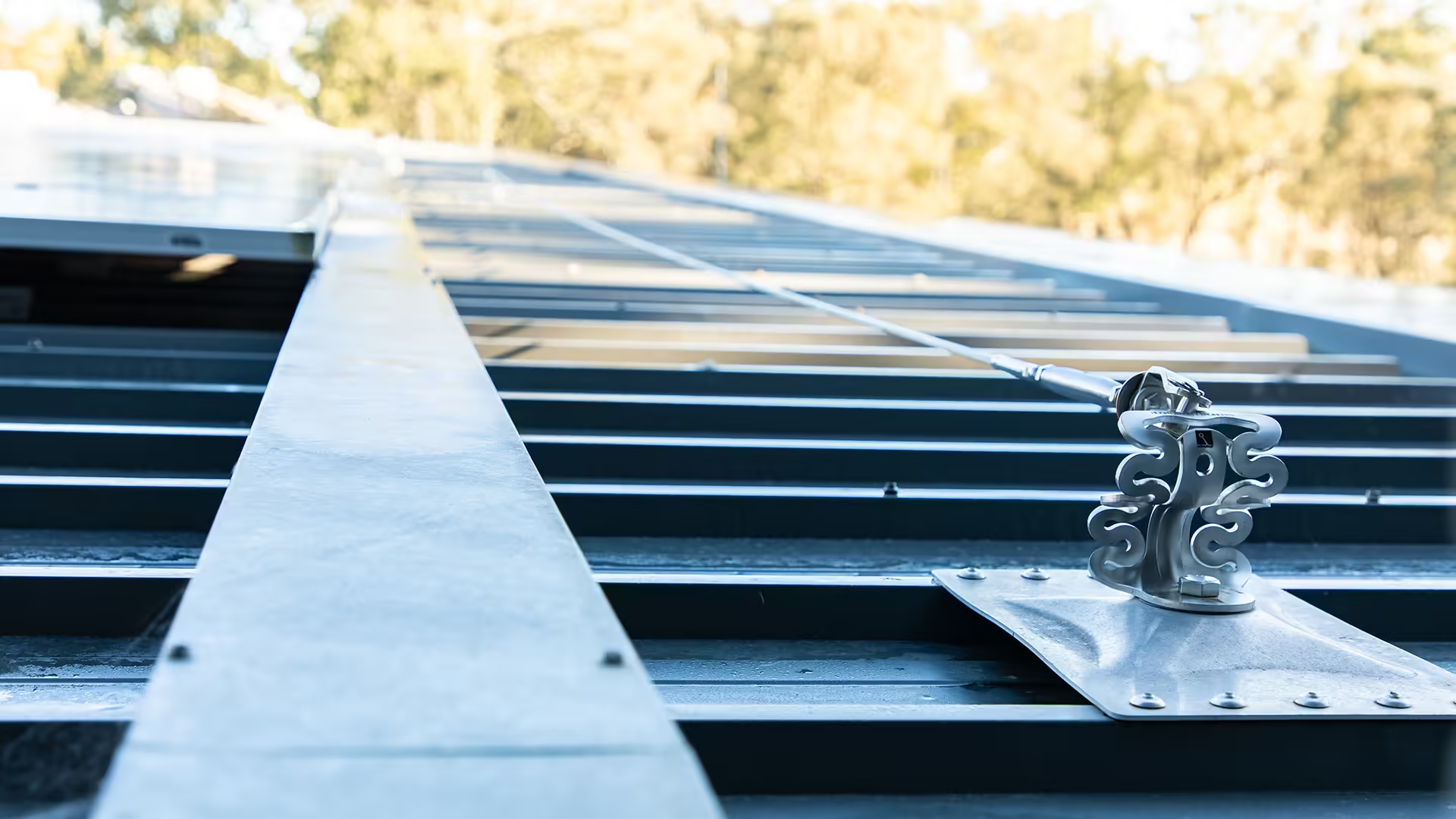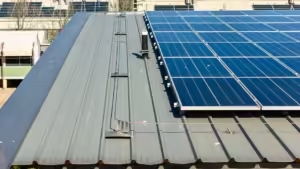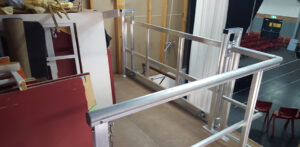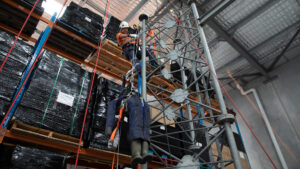A Static line can play an important role in making sure those working at height are protected against the risks of a fall.
Although roof anchor points are by far the most common component of a fall protection system, static line systems also have a key role to play in protecting people working at height.
Static lines can feature components that may appear similar to a roof anchor; however, they are joined to each other with a tensioned stainless-steel cable.
Static line components
At each end of a length of static line, there will a terminating anchor point. This the point where the static line will either start or end.
Attached to one end point will be a tensioner. This tensioner allows the cable to be adjusted post-installation and during routine maintenance inspections. The cable must be tensioned correctly to ensure deflection distances in the event of a fall do not place a worker at risk of hitting the ground.
Depending on the length of the static line, there may be one or more intermediate points installed. The exact location of these points will depend on how far the line is from the nearest fall edge and how many users are going to be accessing the line at any one time.
Along with keeping deflection distances within specified tolerances, these intermediate points can also allow a static line to turn around corners, as well as up and over changes in roof pitch.
The line itself is made from stainless-steel cable. Typically, marine grade 8mm diameter cable is used. The cable is strung from end point to end point, through the required set of intermediate points, before it is attached and tensioned to the required level. The amount of tensioning required may differ depending on the manufacturer of the system.
Finally, the last piece of the puzzle is the static line shuttle, sometimes referred to as a traveller. This is the device that allows the worker to connect to the system and move freely along the path of the line.
Where might I find a static line?
Static lines can be found in a range of different working environments and areas where a fall risk exists.
They are commonly used in areas where access to a long, narrow roof or other edge is required. This could be for gutter cleaning, or to access a facade above an awning.
Outside their use in industrial and commercial fall protection, static lines are also used on tourist attractions like the Sydney Harbour Bridge climb. Some outdoor adventure courses many also use static lines to provide fall protection to participants when in areas well off the ground.
Comparing static lines and roof anchors
To the untrained eye, it can appear that many static line installations are just roof anchors with additional cable strung between them. Reality is that both types of fall protection system serve different purposes and have different use cases. In many situations, a worker may find themselves using both a static line and roof anchors.
The main advantage offered by a static line system compared to roof anchors is that workers do not need to attach to a new anchor point as they move along the system. The shuttle used to connect the worker’s harness to the system allows for free movement along the line.
This can also remove the risk of a worker connecting to the incorrect anchor point when reaching an edge. Roof anchor points often need to be connected to in a specific sequence to maintain a worker being in fall restraint. When moving along a roof, it is easy to either forget to connect to an anchor or to connect to the wrong one when accessing an edge point. This can place a worker outside a safe working area and at risk of a fall from height. The single, moveable attachment point provided by a static line reduces this risk significantly.
Depending on how the static line system has been designed and installed, they also offer the advantage of allowing two (or more) workers to access an area at the same time. Generally, a roof anchor is only rated for a single person to be attached to at a time.
The main disadvantage of static line systems is they have a very limited maximum roof pitch they can be installed on when walking towards the peak or hollow of a roof.
Although when traversing along the edge of a pitched roof, they can be installed up to similar roof pitches that a normal fall arrest anchor is, when traversing up or down the roof, that pitch reduces substantially.
When travelling horizontally (across) a roof using a static line system, generally the maximum angle of the pitch can be 25 degrees. However, when moving vertically (up or down) a pitch, that angle is generally only 15 degrees.
The reason for this reducing in pitch is that should a worker slip or trip while moving vertically along a static line system, the shuttle will not lock off. This results in a worker being a position to suffer a significantly greater fall distance. This increased fall distance increases the chances of severe injury or worse.
Static lines as part of a holistic safety system
Like all fall protection systems, static lines only form one part of a holistic workplace safety system for a site. Having a static line installed may also require there to be compliant forms of safe access.
Anyone needing to use the system to access a work at heights area is required to be trained and be competent in the system use. They should also understand the dangers associated with high-risk work.
Static line systems also need to be inspected for compliance at a regular interval – usually 12 months. In addition, the cable and anchor points must undergo additional, more thorough, inspections 10-years following initial installation.
To understand where a static line system may fit within your site’s height safety needs, talk to the team at HSE by calling 1300 884 978 or email enquiries@heightsafety.net.





